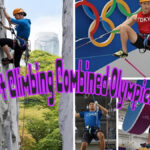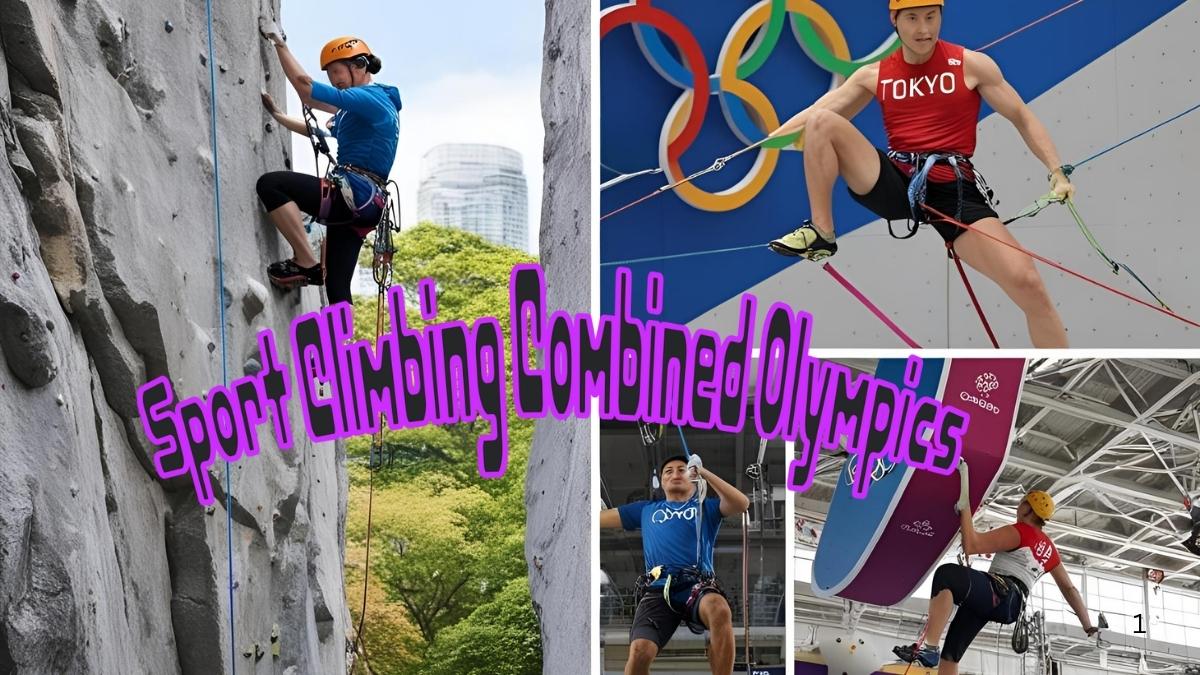
Sport Climbing Combined Olympics: Tokyo to Paris Games
The inclusion of sport climbing in the Olympics marked a significant milestone for the climbing community. Debuting at the Tokyo 2020 Games, the sport climbing combined Olympics format introduced the world to a thrilling, fast-paced, and highly strategic competition that merged three distinct climbing disciplines into one event. As the sport prepares for future Olympic Games, including Paris 2024 and beyond, understanding the unique nature of this combined format is essential for athletes, fans, and newcomers alike.
In this article, we’ll explore what the sport climbing combined Olympics entails, how the format has evolved, the skills required to succeed, notable athletes, and its broader impact on competitive climbing. We’ll also delve into its future in the Olympic landscape.
What Is Sport Climbing Combined Olympics?
The sport climbing combined event in the Olympics is a test of an athlete’s versatility and endurance. In its original Tokyo 2020 format, competitors were required to participate in three very different disciplines:
- Speed Climbing – A head-to-head sprint up a 15-meter standardized wall.
- Bouldering – Solving short but highly technical climbing problems on a low wall without ropes.
- Lead Climbing – Scaling a tall wall using a rope, with the goal of climbing as high as possible within a time limit.
Each climber’s placement in all three events was multiplied together, and the lowest total score determined the winner. For example, placing 2nd in speed, 3rd in bouldering, and 1st in lead would result in a score of 2 x 3 x 1 = 6. This unique scoring system added a layer of complexity, rewarding consistent high performance across all three formats.
The Evolution of the Format: Tokyo 2020 to Paris 2024
The Olympic sport climbing format received mixed feedback in Tokyo 2020, especially from climbers and fans who felt that combining all three disciplines into a single event didn’t fairly reflect the specialization required in each. Speed climbing, in particular, is a very different athletic discipline compared to bouldering and lead.
In response to this, the format was revised for Paris 2024:
- Speed Climbing will now be a standalone medal event.
- Bouldering and Lead Climbing are combined into a separate event.
This change reflects the community’s desire to see athletes compete in disciplines that better align with their training and strengths. It also allows for more medals to be awarded, increasing visibility and recognition for climbers across specialties.
Understanding the Disciplines
To appreciate the sport climbing combined Olympics, it’s important to understand the unique characteristics of each discipline:
Speed Climbing
Athletes race side-by-side on a 15-meter wall, using identical holds and routes. It’s about pure speed, precision, and explosive power. World-class climbers can complete the course in under 6 seconds.
Bouldering
This discipline emphasizes problem-solving, strength, and creativity. Climbers attempt several short routes (called “problems”) within a set time. Points are awarded based on the number of tops and zones achieved and the number of attempts taken.
Lead Climbing
Climbers have one attempt to ascend as high as possible on a long, overhanging route, typically set between 15 to 20 meters. Athletes must manage endurance, route reading, and mental focus under a ticking clock.
Key Skills for Combined Competitors
The sport climbing combined Olympics requires a rare breed of climber—one who can excel across disciplines that often demand conflicting skill sets. Here are the core attributes needed:
- Versatility: Athletes must transition between fast-twitch speed climbing and the slow, technical nature of lead and bouldering.
- Power and Endurance: Raw power for bouldering and speed, plus aerobic and muscular endurance for lead climbing.
- Mental Toughness: High-pressure environments, especially under Olympic scrutiny, require peak mental focus.
- Strategy and Adaptability: Quick decision-making is crucial, especially in bouldering where climbers face multiple unknown problems.
Notable Athletes from the Tokyo 2020 Sport Climbing Combined Olympics
The Tokyo 2020 Games produced several standout moments and athletes in the sport climbing combined Olympics:
- Alberto Ginés López (Spain): Won gold in the men’s combined event. His exceptional performance in speed climbing gave him a crucial edge.
- Janja Garnbret (Slovenia): Dominated the women’s combined competition, particularly in bouldering and lead. She is widely regarded as one of the greatest climbers of her generation.
- Tomoa Narasaki (Japan) and Adam Ondra (Czech Republic): Both favorites in the men’s event, showcasing the sport’s high level of competition.
These climbers demonstrated the adaptability and mental fortitude required to compete at the highest level across multiple formats.
Training for Combined Competition
Training for the sport climbing combined event is a monumental challenge. Athletes often come from a background in one specific discipline and must broaden their training to cover all three. A typical regimen might include:
- Sprint training and explosive drills for speed
- Strength training and campus board work for bouldering
- Endurance circuits and long route sessions for lead
Coaches and climbers often have to carefully balance training loads to avoid burnout while improving across all areas.
Nutrition, recovery, and psychological preparation also play critical roles. The physical toll of training for three events is immense, making smart periodization essential.
Impact of the Sport Climbing Combined Olympics on Global Climbing
The Olympic spotlight has had a profound effect on the world of climbing:
- Increased Visibility: Sport climbing has reached new audiences, helping it grow from a niche hobby to a globally recognized athletic pursuit.
- Youth Engagement: More youth programs and climbing gyms have emerged, inspired by Olympic success stories.
- Professionalization: Sponsorship, media coverage, and athlete funding have all increased post-Tokyo.
Countries that previously had limited climbing infrastructures are now investing in facilities and training programs. The Olympics have provided a global platform, turning climbers into household names.
Challenges and Criticism
Despite the excitement, the sport climbing combined Olympics has faced criticism:
- Unnatural Combination: Many argue that forcing athletes to compete in all three disciplines doesn’t reflect how climbers naturally train or specialize.
- Scoring Complexity: The multiplication scoring system in Tokyo was seen as confusing by casual viewers.
- Equipment Standardization: Especially in speed climbing, minor differences in holds or surfaces can impact performance.
Paris 2024’s revised format addresses some of these concerns, but ongoing dialogue between athletes, coaches, and the International Federation of Sport Climbing (IFSC) will be vital.
The Future of Sport Climbing in the Olympics
With climbing confirmed for Paris 2024 and expected to feature in Los Angeles 2028, the future looks bright. Here’s what we might see next:
- More Specialized Events: Possibly separate medals for each discipline.
- Mixed Team Events: Similar to other Olympic sports, introducing a team element could increase viewer appeal.
- Improved Broadcast and Analytics: Enhanced visuals, athlete stats, and route previews could make the sport more accessible.
As the format matures, so will its fan base and athlete pool. The sport climbing combined Olympics has opened the door for a new generation of climbers to pursue their Olympic dreams.
Conclusion
The debut of the sport climbing combined Olympics was a bold and transformative moment for the sport. By challenging athletes to master three distinct disciplines, it showcased the incredible athleticism and mental resilience required to succeed at the highest level. While the format has evolved and will continue to do so, its legacy is already clear: climbing is here to stay on the Olympic stage.
Whether you’re an aspiring climber, a seasoned fan, or a curious newcomer, the journey of sport climbing in the Olympics is one worth following—filled with adrenaline, strategy, and the relentless pursuit of the summit.
FAQs
What is the Sport Climbing Combined Olympics format?
The Sport Climbing Combined Olympics format requires athletes to compete in speed climbing, bouldering, and lead climbing. In Tokyo 2020, scores from all three were multiplied to determine the winner.
How did the Olympic climbing format change for Paris 2024?
For Paris 2024, speed climbing has been separated into its own event, while bouldering and lead climbing are now combined into a single competition to better reflect athlete specializations.
Why was the original combined format criticized?
Many athletes and fans felt the original format was unfair, as it forced climbers to compete in events they might not specialize in, particularly the contrasting nature of speed climbing versus the others.
Who were the top climbers in the Tokyo 2020 Olympics?
Alberto Ginés López won gold in the men’s event, while Janja Garnbret claimed gold in the women’s. Both showed exceptional versatility across all three disciplines.
Will sport climbing remain in future Olympic Games?
Yes, sport climbing is confirmed for Paris 2024 and is expected to feature in the Los Angeles 2028 Olympics, with potential for more specialized and team-based formats.









Post Comment